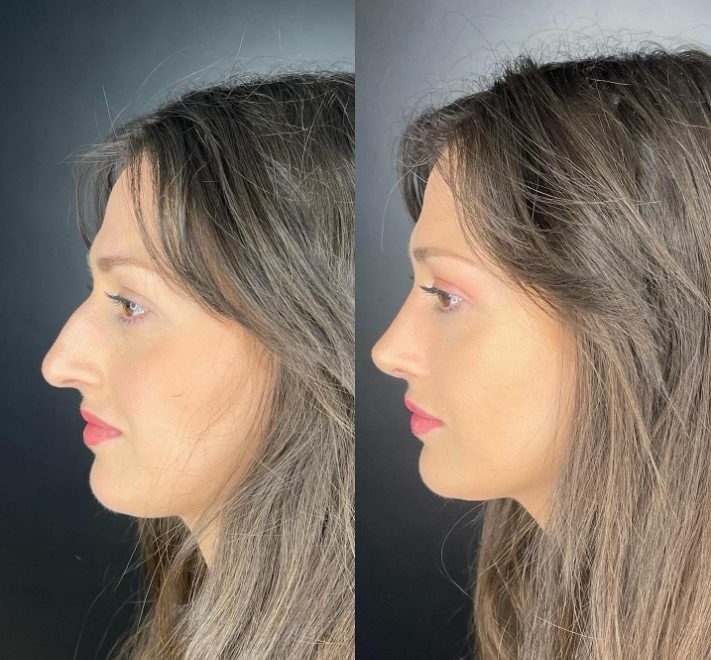
Rhinoplasty, commonly known as a “nose job,” has been a popular cosmetic procedure for decades. Traditional rhinoplasty techniques often involve manual tools like chisels and hammers, leading to potential tissue damage, prolonged recovery times, and less precise outcomes. However, ultrasonic rhinoplasty is revolutionizing the field, offering enhanced precision, reduced trauma, and faster recovery times.
In this article, we explore what ultrasonic rhinoplasty is, its benefits, the procedure, and why it’s becoming the preferred choice for patients and surgeons worldwide.
What is Ultrasonic Rhinoplasty?
Ultrasonic rhinoplasty is a modern surgical technique that uses ultrasonic waves to reshape nasal bones and cartilage. Unlike traditional methods, which rely on manual tools, ultrasonic rhinoplasty employs a piezoelectric device. This device generates high-frequency ultrasonic vibrations to sculpt the nasal structure with exceptional accuracy.
This advanced approach minimizes damage to surrounding soft tissues, blood vessels, and mucosa, resulting in a more controlled procedure and improved outcomes.
How Ultrasonic Rhinoplasty Differs from Traditional Techniques
Precision and Control
Traditional rhinoplasty involves manual fracturing of nasal bones, which can lead to irregularities and less predictable results. Ultrasonic rhinoplasty, on the other hand, offers unparalleled precision, allowing surgeons to shape the nose with micro-accuracy.
Reduced Trauma
The ultrasonic device selectively targets bone and cartilage without affecting soft tissues. This significantly reduces bruising, swelling, and bleeding compared to conventional methods.
Faster Recovery
With less trauma to the surrounding tissues, patients undergoing ultrasonic rhinoplasty often experience shorter recovery times and minimal post-operative discomfort.
The Benefits of Ultrasonic Rhinoplasty
- Enhanced Precision
The ultrasonic tool allows surgeons to make controlled adjustments, leading to more symmetrical and natural-looking results. - Minimized Side Effects
Patients experience less swelling and bruising, making the healing process quicker and less uncomfortable. - Improved Safety
The technique’s selective action ensures minimal damage to soft tissues and blood vessels, reducing the risk of complications. - Better Aesthetic Outcomes
Ultrasonic rhinoplasty offers smoother transitions and refined nasal contours, catering to both functional and cosmetic needs. - Customizable Approach
This method allows for tailored corrections, whether for functional issues like breathing difficulties or purely aesthetic enhancements.
The Ultrasonic Rhinoplasty Procedure
1. Consultation and Planning
Before the surgery, a thorough consultation is conducted to understand the patient’s goals and assess their nasal structure. Advanced imaging techniques, such as 3D modeling, may be used to simulate potential outcomes.
2. Anesthesia
The procedure is performed under general anesthesia to ensure patient comfort.
3. Ultrasonic Reshaping
The surgeon uses the ultrasonic device to reshape the nasal bones and cartilage. The precision of this tool allows for detailed adjustments without damaging surrounding tissues.
4. Closure and Recovery
After reshaping, the incisions are closed, and a splint is applied to support the nose during the initial healing phase.
Recovery and Post-Operative Care
Recovery after ultrasonic rhinoplasty is generally faster and less painful than traditional methods. Here’s what patients can expect:
- Initial Healing
Most patients experience minimal swelling and bruising, which subsides within a week. - Splint Removal
The nasal splint is typically removed after 7-10 days. - Long-Term Results
The final shape of the nose becomes apparent after 6-12 months as residual swelling subsides completely.
Post-Operative Tips:
- Avoid strenuous activities for the first few weeks.
- Keep the nasal area protected from impacts.
- Follow your surgeon’s instructions regarding cleaning and medications.
Is Ultrasonic Rhinoplasty Right for You?
Ultrasonic rhinoplasty is ideal for individuals seeking a more precise and less invasive approach to nasal correction. Candidates include:
- Those looking for aesthetic improvements to the nose.
- Patients with functional issues, such as breathing difficulties or deviated septums.
- Individuals seeking a quicker recovery process.
However, it’s essential to consult a qualified surgeon to determine whether ultrasonic rhinoplasty is the best option based on your specific needs and anatomy.
Choosing a Qualified Surgeon
The success of ultrasonic rhinoplasty largely depends on the expertise of the surgeon. When selecting a professional:
- Ensure they are board-certified and experienced in ultrasonic rhinoplasty.
- Ask to see before-and-after photos of previous patients.
- Read reviews and testimonials to gauge patient satisfaction.
Why Ultrasonic Rhinoplasty is Gaining Popularity
As awareness of its benefits grows, ultrasonic rhinoplasty is quickly becoming the preferred choice for patients and surgeons. The procedure’s precision, reduced recovery time, and superior aesthetic outcomes make it a standout option in modern cosmetic surgery.
Additionally, advancements in technology continue to refine the tools and techniques used in ultrasonic rhinoplasty, further enhancing its safety and effectiveness.
Conclusion
Ultrasonic rhinoplasty represents a significant leap forward in nasal surgery, offering a safer, more precise, and less invasive alternative to traditional methods. With its ability to deliver natural-looking results and a smoother recovery experience, it’s no wonder this technique is transforming the field of rhinoplasty.





Leave a Reply